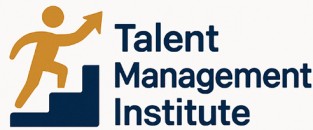
Understanding Predictive Index Certification
Decoding the Predictive Index Certification
The Predictive Index Certification is becoming a vital tool in the realm of talent management, offering a structured approach to understanding and leveraging the potential of your workforce. At its core, this certification serves as a cornerstone for talent optimization, equipping professionals with critical insights into the behavioral drives that influence workplace behavior. By decoding these drives, businesses can assemble high performing teams and develop effective leaders.
Engaging in a Predictive Index workshop provides the groundwork for learning how to interpret various behavioral assessment tools. Through these workshops, professionals can gain a comprehensive understanding of individual and team behavior. The focus is not simply on predicting candidate success but on enhancing employee engagement and decoding workplace dynamics to propel business towards success.
This certification positions professionals as authoritative figures in talent management, enabling them to implement science-backed strategies in the workplace. With access to people data and behavioral insights, leaders can make informed decisions, thus optimizing both recruitment processes and employee development. Aspiring leaders and HR professionals can explore more tools for talent optimization to enhance their proficiency and drive organizational success.
Enhancing Recruitment with Predictive Index Tools
Transforming the Recruitment Process
Utilizing predictive index tools in recruitment is a game changer for businesses looking to attract and retain top talent. By incorporating these tools, organizations can gain deeper insights into the behavioral drives and natural tendencies of candidates, drastically improving the predictability of candidate success. Predictive index assessments help decode workplace behaviors, making it easier to match individuals with roles that align with their inherent strengths and personality traits. This results in developing effective hiring strategies that further enhance team dynamics and overall talent optimization.Customization and Precision in Hiring
A key benefit of integrating predictive index certification with recruiting processes is the ability to customize job roles with precision. By leveraging the data generated from these behavioral assessments, businesses can create a detailed job profile tailored to the specific needs of the team and workplace culture. This data-driven approach ensures that hiring managers can identify not only the professional competencies but also the behavioral competencies required for a role. As a result, teams are more likely to become high performing, as members are more suitably matched to their jobs.Enhancing Candidate and Employee Experience
Predictive index tools can also be instrumental in enhancing the overall experience of both candidates and existing employees. By understanding behavioral insights, organizations can create a more engaging and fulfilling work environment that acknowledges the individuality of each team member. When employers use assessments to predict candidate success accurately, they not only optimize their recruitment strategies but also bolster employer branding, giving them a competitive edge in the marketplace. Moreover, these insights can be beneficial in tailored training workshops that focus on talent development and employee engagement. For those looking to explore deeper into the tools available for refining talent management processes, consider exploring effective tools for talent management, which can offer additional insights and strategies to foster optimization and productivity.Boosting Employee Engagement Through Behavioral Insights
Leveraging Behavioral Insights for Greater Engagement
To boost employee engagement within diverse teams, understanding individual behavioral drives through predictive tools is essential. The predictive index certification equips you with the ability to decode workplace behavior, a crucial skill in contemporary talent management.
Here's how predictive index tools can enhance employee engagement:
- Utilizing data-driven insights from behavioral assessments helps managers understand what motivates their team members, allowing for tailored engagement strategies that align with individual needs.
- The analysis of people data collected from these assessments aids in creating high-performing teams by predicting how different personalities will mesh and work together.
- Workshops based on findings from these tools provide leaders and teams with behavioral insights, strengthening the workplace dynamic and enhancing collaboration.
- This approach supports the development of effective leaders who are adept at leveraging behavioral insights to elevate team morale and productivity, hence fostering a culture of success.
By engaging with these facets of predictive index tools, businesses can pursue talent optimization, fostering an environment where every team member is aligned with organizational goals. For those seeking to develop effective engagement strategies, professional certification in these assessment tools offers a well-rounded understanding, positioning leaders to make informed decisions that benefit both the individual and the business.
Developing Leadership with Predictive Index Insights
Empowering Team Leaders with Behavioral Insights
Leadership development plays a pivotal role in the overarching success of any organization. Understanding your team's unique behavioral drives with the help of predictive index tools allows for more effective leadership. These insights are critical for identifying and nurturing top talent, ultimately leading to high performing teams.
Predictive index certification provides leaders with in-depth behavioral assessments that decode workplace behavior. By learning from these data-driven insights, leaders can optimize their team dynamics and promote a culture of collaboration. The result is a workplace where communication is enhanced, leading to increased employee engagement and higher levels of team success.
Training workshops focusing on leadership through predictive index insights are immensely beneficial. They present an opportunity for leaders to actively learn and apply techniques that assess individual workplace behavior. By aligning leadership strategies with these assessments, organizations can build high performing teams that are well-equipped to meet their business goals.
Furthermore, ongoing workshops and professional certification programs are crucial. They ensure that leaders continually update their skills in talent optimization and behavioral data interpretation, further strengthening the capacity to predict candidate and employee success effectively.
In conclusion, predictive index certification is not just about understanding indices; it's about transforming people data into actionable strategies that develop effective leaders and teams. Through targeted training and a keen understanding of behavioral assessments, leaders are better positioned to harness the full potential of their workforce and drive organizational success.
Implementing Predictive Index Strategies in Your Organization
Unleashing the Power of Predictive Index in your Workplace
The implementation of predictive index tools in your organization is more than just an innovative move; it is a strategic pathway to optimize talent management through data-driven insights. These tools can transform how a business approaches recruitment, engagement, and leadership development.
Firstly, conducting workshops and training sessions is fundamental in ensuring your team adopts predictive index assessments effectively. These events help individuals and leaders alike to understand behavioral drives, facilitating seamless integration into your existing workflows. Employees can better decode workplace behavior, leading to enhanced collaboration and productivity.
When predictive index assessments are intertwined with broader talent optimization strategies, businesses can build high-performing teams that adapt swiftly to industry demands. Leaders trained in interpreting predictive data will be more equipped to foster environments that encourage growth and innovation, ultimately driving business success.
Optimization at the team level isn’t just about individual data. It’s about harmonizing these insights to develop effective leaders who can predict candidate success and nurture top talent. This approach not only improves employee engagement but also contributes to the overall efficacy of the organization’s talent management framework.
Incorporating index professional certification into this process further refines your leaders' capacity to navigate complexities within workplace environments. This professional development aspect underpins a strong foundation for sustained organizational growth and success.
Challenges and Considerations in Using Predictive Index Tools
Overcoming Challenges in Predictive Index Implementation
While the benefits of using Predictive Index (PI) tools in talent management are substantial, organizations may face several challenges when implementing these strategies. Understanding these potential hurdles can help businesses better prepare and optimize their talent management processes.
Data Interpretation and Application
One of the primary challenges is accurately interpreting and applying the data derived from PI assessments. While these tools provide valuable insights into workplace behavior and individual drives, translating this data into actionable strategies requires expertise. Organizations must invest in training and workshops to ensure their teams can effectively utilize these insights to build high-performing teams and develop effective leaders.
Ensuring Consistent Use Across the Organization
Another challenge is maintaining consistency in the use of PI tools across different departments. Without a unified approach, the benefits of predictive assessments can be diluted. Leaders should ensure that all team members, from HR professionals to department heads, are aligned in their understanding and application of PI insights. Regular workshops and professional certification programs can help maintain this consistency.
Balancing Data with Human Judgment
While data-driven insights are invaluable, it's crucial to balance them with human judgment. Relying solely on data can lead to overlooking the nuances of individual personalities and workplace dynamics. Leaders should learn to integrate behavioral data with their own observations and experiences to make well-rounded decisions.
Addressing Resistance to Change
Implementing new tools and strategies often meets resistance from employees accustomed to traditional methods. To mitigate this, organizations should focus on clear communication and demonstrate the value of PI tools in enhancing employee engagement and candidate success. Involving employees in the process through workshops and feedback sessions can also help ease the transition.
Cost and Resource Allocation
Finally, the cost and resources required for implementing PI tools can be a concern, especially for smaller businesses. It's essential to evaluate the potential return on investment and align the use of these tools with the organization's broader talent optimization goals. Strategic planning and phased implementation can help manage costs effectively.
By addressing these challenges head-on, organizations can unlock the full potential of Predictive Index tools, leading to a more engaged, productive, and successful workforce.













